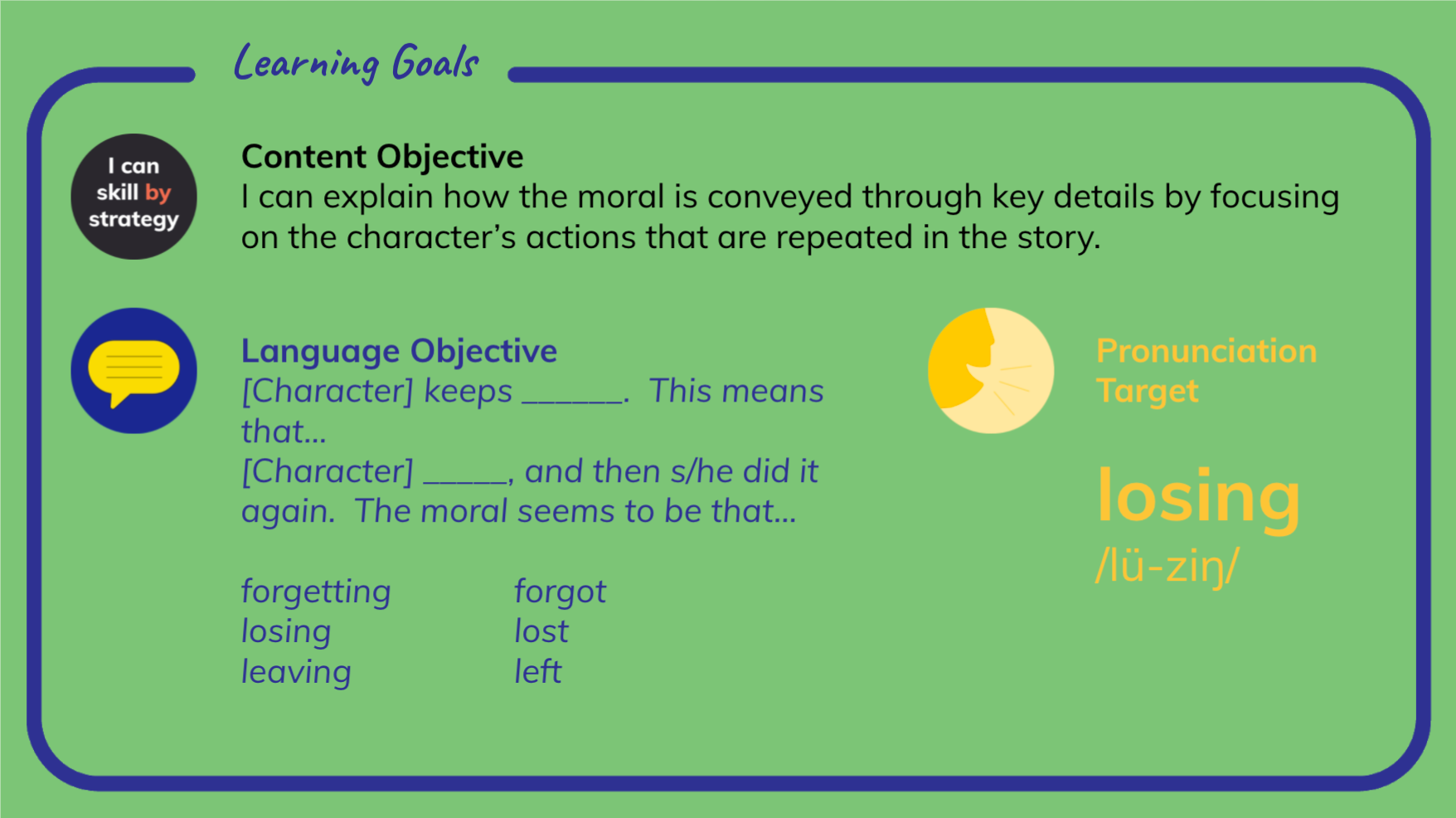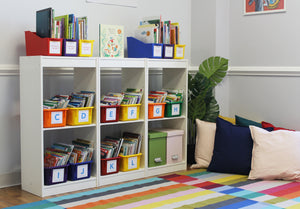How to Generate Productive Language Goals
A few years ago, a colleague of mine from Utah came to visit my classroom in Brooklyn. One of the things that she asked me was: How do you establish language goals? At the time, my answer was “it all depends on the context of the lesson.” Looking back, I realize my answer wasn’t very straightforward.
For the past six years, I have been coaching teachers on how to find language goals. Today’s post is about sharing this process. I’ll start with this visual:

Productive language goals are the thoughts students produce when they think, speak or write. Since their oral language production involves thoughts, it means that students are speaking in complete sentences.
Therefore, as language teachers, we need to plan for sentence stems and words or clauses to finish those sentences. In the upper grades, when students’ ears have a harder time identifying different sounds, we also need to teach a pronunciation target. A pronunciation target is one or two words that do not follow a typical spelling pattern, and may trip our students up a little.
Where Do Productive Language Goals Come From?
Productive language goals come straight from the strategy. Once you have identified the way in which your students will be implementing a certain skill, you can consider how they will think, write or talk about the strategy.

I like to come up with sentence stems that students will use as they are implementing the strategy. I make a movie in my mind of what they could say (ability) and what I want them to say (next step). Then, I narrow my sentence stems down to one or two new sentence stems. I could post several more sentence stems, but only one or two are new.

Once I’ve got the sentence stems down, I need to think of the words to fill in the blanks. Otherwise, we all know what’s going to happen: most students will start in the immersion language and end in their dominant language. I think of different types of words or clauses that could help them.

Finally, I look at those sentence stems and words, and decide if there’s a particular word or two that I need to teach explicitly in terms of pronunciation. That becomes my pronunciation target, and I list below it the IPA phonetic transcription.

There is, of course, so much more to productive language goals! Care to learn more? Sign up for a webinar on Productive Language Goals. You’ll learn more about how to generate language goals with literally dozens of sample lessons. I’ll also give you tips on how to offer linguistic scaffolds, and share insight on holding students accountable linguistically.
Your partner in dual language learning,
marie



Leave a comment